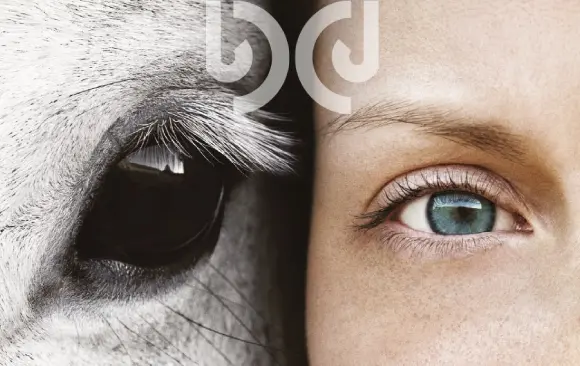OUR ENGAGEMENTS
A PUBLIC-PRIVATE PARTNERSHIP
During the Sustainable Leather Forum 2020, held in Paris in mid-September, LIM Group had the chance to make its voice heard alongside fashion giants such as Kering, LVMH and Hermès in order to discuss the future and issues affecting the leather industry. On this occasion, Laurent Duray was able to talk about CSR issues, expertise, regions and the attractiveness of this sector. At the same time, he was able to present the FECNA project (Filière Excellence Cuir Nouvelle-Aquitaine), which is part of the ResoCUIR cluster that he chairs: an ambitious and ethical project bringing together regional and private facilities, breeders’ organizations, abattoirs, tanners and manufacturers from New Aquitaine to develop top-quality leathers. Many companies in the leather industry face the problem of ensuring the supply of very high-quality hides and skins in order to meet the ever-increasing demand. Over the past eight years, two experimental projects have been set up in Corrèze and the Dordogne.
Allow us to explain.
The first project has been awarded the ‘‘Pôle d’Excellence Rurale’’ de la filière cuir (Rural Pole of Excellence for the leather industry-PER CUIR) label, certified by the State in 2012 in the Périgord Vert region of Dordogne. Its main objective is to increase the quality of hides, while respecting animal welfare and paying breeders regardless of the quality of the hides. The second project, code-named GDS 19-HAAS, came from the Tannerie Haas, a French tannery that has been working to improve the quality of the skins of unweaned calves. This tannery approached the Groupement Corrézien de Défense Sanitaire (GDS 19) in 2016, to offer them a partnership to improve the quality of the hides. Corrèze was chosen as a test area for this project because of its high concentration of breeders of unweaned calves. Twenty-four pioneer breeders were selected to participate in the PER CUIR project over a period of four years and two hundred for the GDS 19-Haas project over three years. As far as the PER CUIR project is concerned, a demanding set of strict specifications has been established: experience requires them to limit the causes of defects by replacing barbed wire with smooth wire, removing any posts that could cut them, treating external parasites (lice), and skin diseases (ringworm). The same care is expected when transporting calves. For the GDS 19-Haas project, it is in particular de-worming and then vaccination against ringworm that is being tested.
Here are a few figures about the results of the two projects: for the PER CUIR, an increase of 30% in high-quality leather skins, for the GDS 19-Haas, the success of the ringworm protocol (no ringworm in 99% of the hides compared to 85% in 2017) and a strong decrease in the number of bites (none on 55% of the hides compared to 6% at the beginning of the project). On the strength of these promising results, Reso-CUIR is launching an engineering study on the prospects of developing these two innovative projects and is convinced of the relevance for the entire value chain. In 2019, the cluster which is financed by private and public bodies, received support from the New Aquitaine Region and worked with the Comité Interprofessionnel de Veau sous la Mère (CIVO) to continue to support its objectives. Through this project, the leather industry, which represents more than four thousand jobs in the region, continued to develop while strengthening its convictions. This is how the initiative known as the Filière Excellence Cuir Nouvelle-Aquitaine (FECNA) was created in 2020, with the aim of laying the technical and economic foundations for a sector of excellence in meat, leather and regional development. It should accompany and technically support the breeders, to develop regional products in the meat sector while recycling a maximum of raw materials to limit waste but also to maintain and boost employment.
To achieve this, the FECNA is built on four pillars:
- A unique partnership bringing together the players in the livestock and leather sectors.
- The setting up of individual traceability of hides with the creation of an information system to provide quality feedback to breeders.
- The implementation of technical and sanitary protocols on the farms.
- Training for technicians from production organizations and abattoirs.
In order to finance such a project, a unique partnership has been created between public and private structures, bringing together breeders, producers’ organizations, abattoirs and tanners and manufacturers. With ten million euros of financing over four years, including investments in animal husbandry (of which 3.4 million came from the New Aquitaine Region), the FECNA project hopes to convince half of the 1,520 unweaned calf breeders to commit to the same efforts. The long-term goal is to ensure a better distribution of income generated by leather to all stakeholders.
“The aim is that breeders no longer consider the hide as a waste product, but on the contrary as a raw material that can also benefit them,” Laurent Duray told France 3 Nouvelle-Aquitaine television channel on October 15. ‘‘If we work on quality, all the hides that do not go to waste will result in added value to the breeders. ’’


